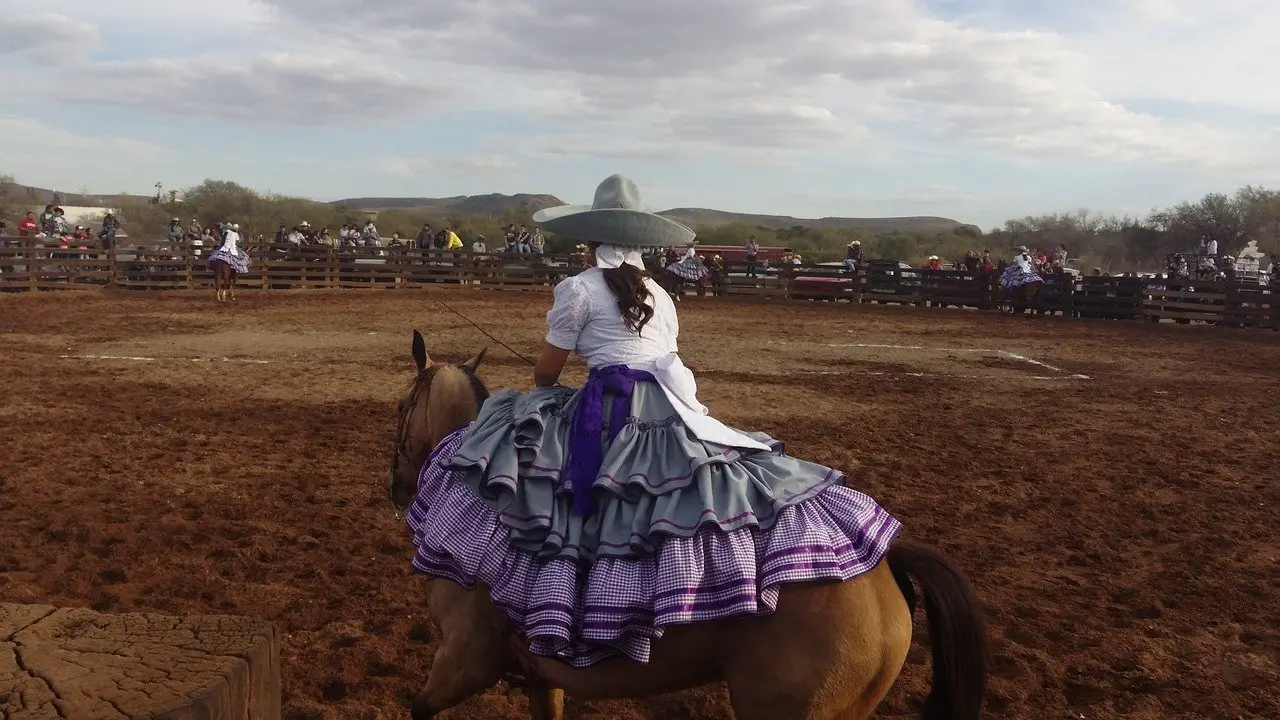Last Updated on March 23, 2022 by Allison Price
Ulysses, one of our Hanaeleh Horse Ambassadors, is one of many examples of horses that we have rescued from being abused or suffered in “Charro” riding. Ulysses was rescued from Riverside Animal Shelter and brought to Hanaeleh as a stray. He had been wandering along the riverbed starving.
Ulysses suffered from cuts and scarring across his legs and neck. Multiple bowed tendons can be seen on his front legs, as well as scarring caused by repeated hits with a blunt object. Three years later, he still has scars on his hips, flank, and back. He has poor eyesight and neurological problems. This is not an accident, but a result of his Charro training.
What is a Charro, you ask?
A Chaarro Mexican cowboy is the Charro . The discipline is rooted in the idea of using a horse to move large numbers of cattle. The riders today practice in an arena, and rarely are there cows. The saddle is a throwback, and often very heavy, with large pommels. These saddles can be decorated with silver or very colorful. Charro riding is frowned upon.
California is a common place to see horses that have been “charroed”, or subjected to abuses that are very common in the discipline.
Charro riding is horse abuse
When Ulysses arrived at Hanaeleh, he was severely cut and scarred all over his body.
Charro riding is where the horse is forced to “dance,” or move around while the rider rests on his back. The horse can be agitated and even scared while “dancing.”

Cross-tying horses and placing them on wooden planks is a way to teach horses how to dance. Cross-tied horses cannot move forward and one person holds a whip behind them, while two others stand at their front hitting the horses’ legs with sticks or whips. The horse soon learns to stand up and not be hurt. Ulysses was probably subject to these constant beatings that left him with so many scars on his back and legs.
The Charros attach chain to horses’ legs to mimic the Tennessee Walking Horses. This is to get them to throw their legs out of control. The horse appears to be “dancing” and the effect is dramatic. However, the truth is that the horse is afraid of the chain hitting his legs.
Charro “Dancing in Action”
Here is a video showing horses learning the Charro way of dancing. This video was not created by Hanaeleh, but it will give you an idea about the abuse that Ulysses, and other Charro horses, go through. There are a few typos in this video, but that is irrelevant to the message.
For hours, Charro Cruel Practice of Tieing Horse’s Head
Charros do not like horses moving their necks and heads too much. They prefer the horses to move their feet, but not their necks and head. To prevent horses from trying to escape their rider’s spurs or flailing around, the Charro will tie their horse’s neck high to the ceiling. The horse can’t fight his rider because of the tightness and exhaustion of his neck muscles.
The Neurological Reason Ulysses Exists is Because of Charro Riding
His neurological problems are likely caused by pinched nerves in his neck. This is what our vet believes. We were unable to reach Ulysses in the time necessary to fix the damage done by the riders. His neurological issues can’t be reversed. Instead, we massage his neck and give him Vitamin E to improve circulation.
Horse “Tripping” (Charro Riding’s Heinous Sibling).
American cowboys are similar to Charros in that they will rope horses and throw them down to show their dominance. This is also called tripping. This can cause severe damage to the horse’s joints and legs, sometimes even permanent damage. Other people have helped to rescue horses and pony from the hands of Charros. We know that some horses were emotionally and physically traumatized by being tripped on or trained by Charros. Sometimes the horse has a mental breakdown and is unsafe to ride.
Nevada was severely traumatized and left to starve by the Charros that owned him.
These abusive practices are not the only ones Charro Riders follow
There are many people who take time to train their horses and are very kind. We see the results of abuse. The horse that was sold after Charros injured the horse so severely that he can’t ride again is the one we see.
We are able to see Ulysses, a remarkable horse, deal with the trauma he has suffered and we know that he would have died without our help. He would have been killed, not because of his physical condition, nor because he was a poor horse. Instead, he would have been killed because people set out to harm him, either because they didn’t know how to properly train him or because they simply didn’t want to.
Hanaeleh suggests that, instead of protecting the entire Charro group of riders, those who don’t resort to abusive methods will call out those with the same! They will stop horses like Ulysses being tortured in an unintentional attempt to showoff.


